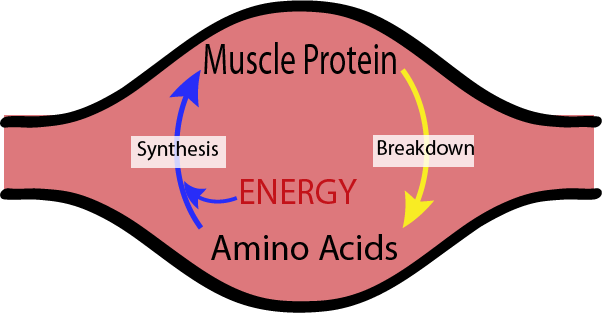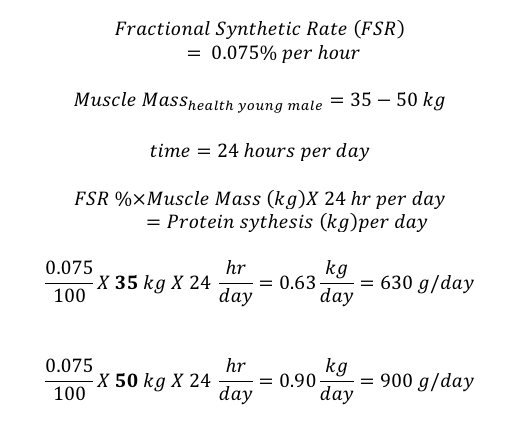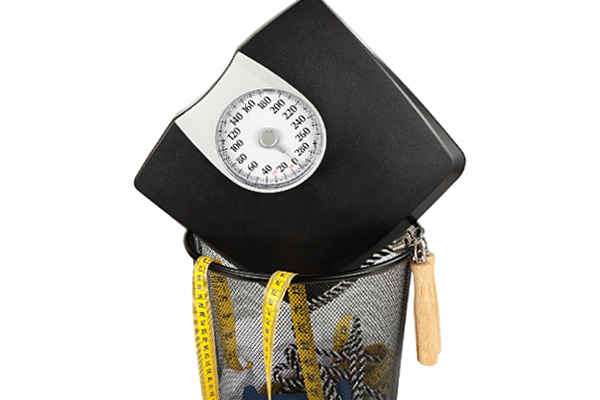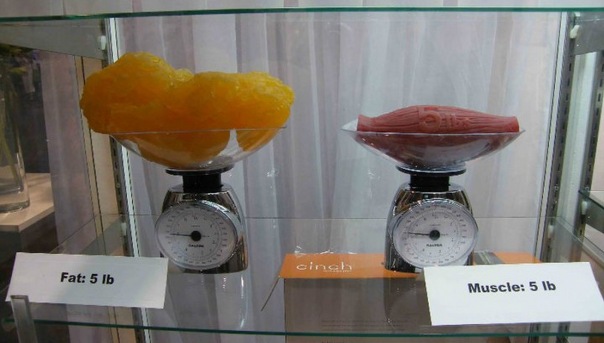Research Review: Is cardio better than weights for fat loss?
Contrary to recent headlines, aerobic exercise alone is not a recipe for faster fat loss.
Instead, a combination of resistance training and aerobics will lead to the most impressive, and longest lasting improvements in body composition.
Introduction
Where to begin?
First, Science Daily’s headline misrepresents the study’s results. The study doesn’t actually conclude that aerobic exercise is better than resistance training for weight or fat loss.
Huh? Then what’s up with that headline?
Well, first – as usual – the media oversimplified things; to the point of not even being accurate. And yes, that’s why most media headlines are not very trustworthy.
Second, the study used terrible training programs. Both the aerobic training program and the resistance-training program were less than optimal. Way less than optimal.
Of course, it’s pretty difficult to draw reliable conclusions about the relative effectiveness of exercise programs that are ineffective in the first place!
Third, this study included no nutritional intervention.
Finally, researchers in this study didn’t seem too concerned about the difference between fat loss and lean mass loss. They lumped it all together as “weight loss”, as though there really wasn’t a difference between a pound of muscle and a pound of fat.
Muscle mass matters. A lot.
Do you like walking up stairs on your own or would you rather take one of those home stair lifts? Have you seen one of these things?
First you have to wait for the lift to ever-so-slowly make its way down the stairs. Then you get in it and slowly go up the stairs.
I tried it once with my pet turtle Herb. Herb jumped off half way up. He didn’t have the patience and decided to walk up the stairs.
On a more serious note: For a while, I researched treatments for muscular dystrophy, a disease that causes severe muscle loss. Do that kind of research for a day or two, or talk to people with muscular dystrophy, and you’ll quickly recognize the vital importance of maintaining muscle, even if your goal is to lose weight.
My biggest peeve in the weight loss industry is that weight loss is the measurement for success. For example, here are some other ways to lose weight:
- Amputation.
- Osteoporosis.
- Stomach flu (though intestinal parasites will do in a pinch).
- Coma.
- Chemotherapy.
- Shaving all your hair off.
- Lobotomy.
Thanks, but I’ll pass on all of those.
Muscle helps you walk up and down stairs and pick up a soup can. And, of course, keeping you moving is muscle’s most important function.
But muscle can also help you lose fat and stay lean.
Muscle metabolism
Increased basal metabolism is probably the most obvious advantage of having more muscle. Actually, to be more exact, the more muscle you carry, the higher your resting energy expenditure (REE).
Since REE is the biggest part of your total energy use in a given day, it can change how many calories you burn [1] .
Have you ever wondered why muscle uses energy when you’re doing absolutely nothing? Seems like a waste.
Well, muscle is always up to something. It’s constantly being broken down and re-constructed, or synthesized. In fact, all tissues, to one degree or another, are constantly being remade. It takes about seven days to completely regenerate your skin, and seven years to replace every cell in your skeleton [2].
What makes muscle special is that you can make more of it – a lot more. In other words, unlike bone and skin cells, muscle generation is, to some extent, within your control. Whereas after puberty, you can’t make a lot more of other tissue. Except fat.

Schematic of muscle synthesis and breakdown. Muscle synthesis requires amino acids and energy.
Muscle: by the numbers
Your body uses energy to break down and remake muscle. How much energy? That depends on how much muscle you have.
If you really want to know how much energy muscle uses, take a look at the calculations below.
(In case you have deep-seated math phobia, here is the lowdown: Each kilogram of muscle uses at least 10 kcal per day [3]).
Okay with that? Then skip to the next section. Fellow math nerds can read on for the more detailed explanation.
Warning: Math ahead! Proceed at your own risk.

The amount of energy being used can be calculated if you know a few things:
- How much protein is synthesized by muscle in a given hour (this is called fractional synthetic rate, or FSR).
- How much muscle somebody has.
The average fractional synthetic rate (FSR) of muscle protein is about 0.075%/hour [3,4].
Now, the average young, healthy man is about 35 to 50 kg (77 lb to 110 lb) of muscle. (Note, we are referring only to muscle, not lean body mass.) [3,4].

Voila! An average healthy male with 35-50 kg of muscle makes about 630 g to 900g of protein per day.
(For comparison, a frail elderly woman has about 13 kg of muscle. We will leave the calculations to you, but obviously, she will be making less protein.)
To determine what this means in terms of energy use, we need to do a little more math.
Four moles of ATP (energy cells use) are required for each mole of amino acids used to make protein. One mole of ATP releases 20 kcal of energy.
So, using the average molecular weight for amino acids of about 110 g/mole, we can calculate the amount of kcal used per day to make protein [3, 5,6].
Energy used per day by 50 kg of muscle:

Clear as mud?
Well, to repeat, it boils down to an extra 13 kcal/kg of muscle.
Robert Wolfe, one of the biggest researchers in the muscle synthesis field, rounds this number down to about 10 kcal/kg per day [3].
Don’t confuse Robert Wolfe, the protein turnover researcher, with Robb Wolf, the Paleo guy. Despite the similarity in names and the fact that both Wolves promote the eating of meat, they are actually different people.
How much does this matter?
Either way, you might be thinking: Big deal. Muscle doesn’t seem to give a significant metabolic advantage. Right?
Well, not exactly.
First, the 10 kg to 13 kg figure is likely an underestimation [3].
Second, remember that a frail elderly woman has a muscle mass of 13 kg compared to 50 kg for a healthy, young male.
That works out to 37 kg of muscle difference.
Which means that Granny is using lots less energy than our hypothetical young man.
Instead, she is likely to be gaining fat. Possibly lots of it. And she wonders why it is accumulating so much faster than when she was younger (and more active…and…um…slightly more muscular).
Meanwhile, if she had more muscle mass, she would be using more energy just by sitting in her rocker!
Okay, realistically, Granny isn’t going to put on 37 kg (81.5 lb) of pure muscle this year – or ever.
But she could put on some muscle, or at the very least she could slow down how much muscle she loses each year. And by doing that, she will decrease the fat she gains.
In terms of what’s possible, if a little optimistic – a five kg (11lb) weight gain in muscle works out to 250 kcal per day, or 2.4 kg (5.3 lb) of fat lost per year – and over 12 kg (25 lb) in 5 years.
Just from resting muscle. This doesn’t include extra calories used for exercise or walking to your car or rocking in that chair or whatever else you do.
The moral of the story? Throw away your scale (or at least hide it for awhile.)

Generally, you don’t need to convince men to gain muscle, but women tend to be more concerned about getting “too big.”
Here’s why women should gain muscle.
Lose weight the easier way
Here’s a familiar scenario. In January, Jane and Bob agree to lose weight – together. Jane watches what she eats, counts every calorie, and spends hours on the treadmill every day. After a month, she’s down by a pound.
Meanwhile, Bob decides to drink less soda and manages to cut down to one can a week from his usual four. He gets to the gym when he can – maybe three times a week – but half the time, he ends up cutting his workout short. One month of this, and he is ten pounds lighter!
What the heck? Why does this happen? (I can hear women around the world gnashing their teeth from here.)
There are many physiological reasons, but the difference in their muscle mass is one of the biggies.
Let’s compare two women. Jane and Mary both have the same amount of fat, but Mary has an extra 7 kg (15 lb) of muscle.
If, for one year, Jane did exactly what Mary did to maintain her weight– snowboarding, sleeping, swearing in six languages, whatever – Jane would actually gain 8.5 kg (18.7 lb) of fat, increasing her body fat percentage to 35.8%. Just because of the differences in their resting muscle mass.
The other thing you might notice is that since Mary has more muscle and weighs more overall, despite having the same amount of fat, she actually has a lower percentage of body fat.
Weight versus size
Since muscle is more dense than fat, 1 kg of muscle will take less space than 1 kg of fat. Muscle is 1.06 kg per liter of space and fat density is 0.9196 kg per liter of space.
If you gained 10kg of muscle at the same time you lost 10kg of fat, you would be smaller. About 1.4 liters smaller. On the scale you would weigh the same. But your pants would be looser.
Let’s say you and your friend decide to start two different weight loss programs at the same time. After 6 months, you’ve lost 10 kg by working out and eating right, while your friend has lost 11 kg by lying in bed drinking coffee and smoking.
Your 10kg scale weight loss might equal a 10 kg muscle gain with a 20 kg fat loss. If so, you’d be 12.3 liters smaller.
On the scale, it would look like your friend who lost 11 kg (9 kg of muscle and 2 kg of fat) was doing better, but in fact, she’d only be 10.7 liters smaller, making her 1.6 liters (3.8 pints) bigger than you. Ha!
Meanwhile, going forward, who will maintain her new weight more effectively? It sure won’t be your friend.
Of course, this is an oversimplification, because muscle and fat are not the only things at play. But the message is the same – losing weight is very different from losing fat.

Size matters. Five pounds of fat takes up more space than 5 pounds of muscle.









 As a newbie you should stick with the same program for quite some time. But as a more advanced lifter you need more frequent changes.
As a newbie you should stick with the same program for quite some time. But as a more advanced lifter you need more frequent changes.